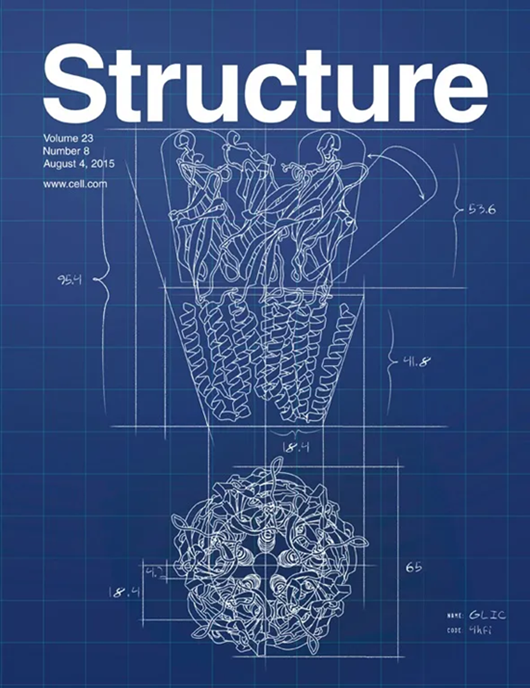Redefining the role of the EryM acetyltransferase in natural product biosynthetic pathways
IF 4.3
2区 生物学
Q2 BIOCHEMISTRY & MOLECULAR BIOLOGY
引用次数: 0
Abstract
The GNAT (GCN5-related N-acetyltransferase) superfamily comprises enzymes with a conserved fold and diverse catalytic activities, including primarily acyl transfer, with a few examples of decarboxylation. EryM, a GNAT from Saccharopolyspora erythraea, has been implicated in both erythromycin and erythrochelin biosynthesis, with dual functionality as an acetyltransferase and a decarboxylase. Despite an historical association with malonyl-coenzyme A decarboxylation activity, this dual activity has remained enigmatic as its close homologs were identified with only acyl transfer activity. Here, functional assays demonstrate that EryM catalyzes acyl transfer but lacks decarboxylation activity, challenging long-standing assumptions about its biosynthetic role. Crystal structures of EryM and an acetyl-CoA complex and comparison with homologs in siderophore pathways reveal a conserved catalytic pocket with an essential His and identically positioned side chains common to GNAT enzymes for N-acyl transfer from CoA to primary hydroxylamine substrates. Bioinformatic analysis defines a large GNAT subfamily broadly distributed in the microbial world.

重新定义EryM乙酰转移酶在天然产物生物合成途径中的作用
GNAT (gcn5相关的n -乙酰转移酶)超家族包括具有保守折叠和多种催化活性的酶,主要包括酰基转移,以及一些脱羧的例子。EryM是一种来自红糖多孢子菌的GNAT,与红霉素和红螯素的生物合成有关,具有乙酰转移酶和脱羧酶的双重功能。尽管历史上与丙二酰辅酶A脱羧活性有关,但这种双重活性仍然是谜,因为它的同源物仅被鉴定为酰基转移活性。在这里,功能分析表明EryM催化酰基转移,但缺乏脱羧活性,挑战了长期以来关于其生物合成作用的假设。EryM和乙酰辅酶a复合物的晶体结构以及与铁载体途径中的同源物的比较表明,在n -酰基从辅酶a转移到初级羟胺底物的过程中,GNAT酶具有一个保守的催化袋,具有必要的His和相同位置的侧链。生物信息学分析定义了一个广泛分布于微生物界的大GNAT亚族。
本文章由计算机程序翻译,如有差异,请以英文原文为准。
求助全文
约1分钟内获得全文
求助全文
来源期刊

Structure
生物-生化与分子生物学
CiteScore
8.90
自引率
1.80%
发文量
155
审稿时长
3-8 weeks
期刊介绍:
Structure aims to publish papers of exceptional interest in the field of structural biology. The journal strives to be essential reading for structural biologists, as well as biologists and biochemists that are interested in macromolecular structure and function. Structure strongly encourages the submission of manuscripts that present structural and molecular insights into biological function and mechanism. Other reports that address fundamental questions in structural biology, such as structure-based examinations of protein evolution, folding, and/or design, will also be considered. We will consider the application of any method, experimental or computational, at high or low resolution, to conduct structural investigations, as long as the method is appropriate for the biological, functional, and mechanistic question(s) being addressed. Likewise, reports describing single-molecule analysis of biological mechanisms are welcome.
In general, the editors encourage submission of experimental structural studies that are enriched by an analysis of structure-activity relationships and will not consider studies that solely report structural information unless the structure or analysis is of exceptional and broad interest. Studies reporting only homology models, de novo models, or molecular dynamics simulations are also discouraged unless the models are informed by or validated by novel experimental data; rationalization of a large body of existing experimental evidence and making testable predictions based on a model or simulation is often not considered sufficient.
 求助内容:
求助内容: 应助结果提醒方式:
应助结果提醒方式:


